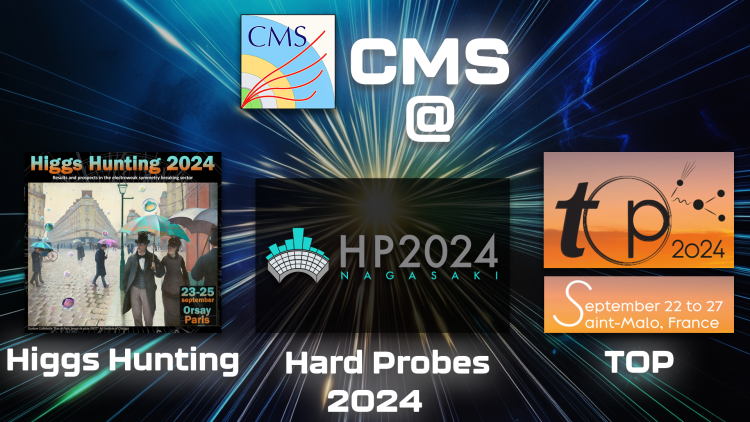
The CMS Collaboration has announced 14 new results for summer topical conferences – Higgs Hunting 2024, Hard Probes 2024, and TOP 2024.
In HIG-22-013, we present a search for a heavy scalar or pseudoscalar boson decaying to a top quark-antiquark pair. We observe a significant deviation from the background prediction, located close to the top quark-antiquark production threshold. Our study indicates that the excess is consistent with a top quark-antiquark bound state, ηt, predicted by a simplified model of non-relativistic quantum chromodynamics – the result opens up prospects for further investigations by both the experimental and theoretical communities to elucidate the nature of this excess.
In another new result (HIG-20-012), we present a search for a heavy scalar particle X decaying into a Higgs boson and another scalar particle Y. Both the Higgs boson and Y are reconstructed each from a pair of bottom quarks. We investigated a range of masses from 400 GeV to 1.6 TeV for X, and from 60 GeV to 1.4 TeV for Y, and found the data to be in agreement with the background-only standard model hypothesis. Results are interpreted in the next-to-minimal supersymmetric standard model.
In SMP-24-003, we derive constraints on coefficients corresponding to operators of the standard model effective field theory, which characterises all possible beyond standard model deviations at an energy scale much higher than what we are probing at the LHC. The constraints are extracted from a simultaneous fit to seven sets of CMS measurements investigating the Higgs boson, electroweak vector boson, top quark, and multi-jet production. We derived individual constraints on 64 of these parameters, and 42 linear combinations wherein the parameters are varied simultaneously. The constraints are also translated into lower limits on the probed energy scale of new physics, Λ.
We present several new results from heavy ion collisions. In particular, one of the phenomena we study is the collision of “photon clouds” – the ions, owing to their large electromagnetic charge, become a source of photons – with each other as well as with the nuclei. These collisions are called ultraperipheral collisions.
In HIN-24-003, we present a first-ever measurement of the production of D0 mesons in ultraperipheral collisions, using data collected during the LHC Run 3 campaign in 2023. We utilise CMS’s zero-degree calorimeters to reconstruct D0 meson candidates decaying to K and π particles, as a function of the transverse momentum and rapidity of the D0 mesons. The study establishes new experimental constraints on distributions of the momentum fraction carried by gluons in lead nuclei, and opens up a new channel for such studies.
In another new result (HIN-24-010), we present the first measurement of angular correlations between two types of jet axes, obtained by using different clustering algorithms, in lead-lead collisions. The new measurement studies jet substructure in previously unexplored kinematic regions, and shows great promise for providing new insights into the dependence of energy loss on colour charge in theoretical models.
Here is a list of all our results presented at the conferences. Details of the papers and briefings will be added throughout the conferences.
|
|
|
|
|
|
|
|
||
|
|
|
|
|
|
|
|
|
|
|
|
|
||
|
|
|
|
|
|
|
|
|
|
|
|
|
||
|
|
|
|
|
|
|
|
|
|
|
|
|
|
|
|
|
|
||
|
|
|
|
|
|
|
|
||
|
|
|
Read more about these results:
- Do you want to get an email notification when there is a new physics briefing? Subscribe here

